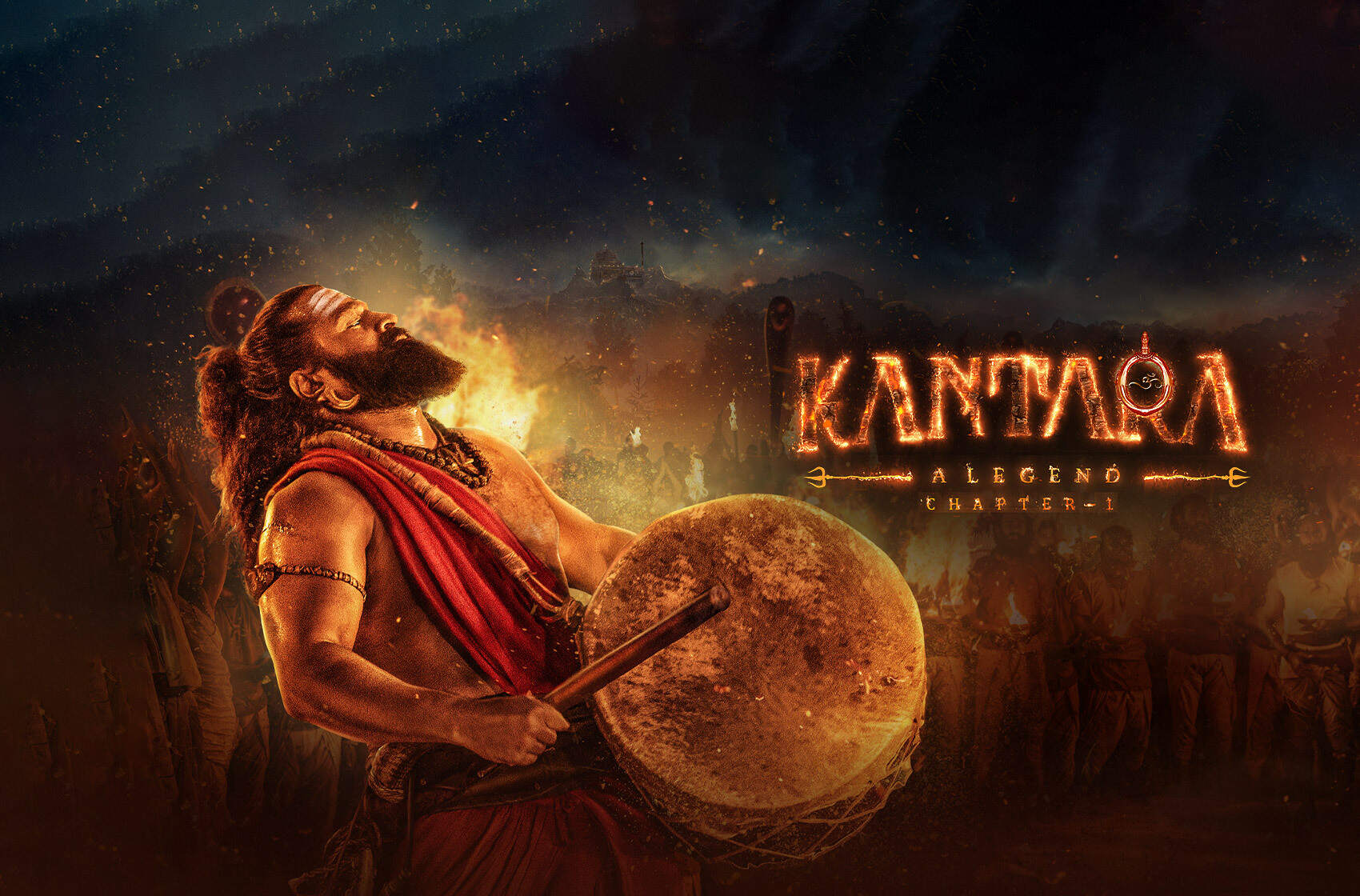Box Office
Kantara: A Legend Chapter 1 – A Cinematic Masterpiece

Kantara: A Legend Chapter 1 – A Cinematic Masterpiece That Transcends Boundaries
The film Kantara: A Legend Chapter 1 has emerged as a captivating cinematic gem that beautifully merges folklore, culture, and gripping storytelling. Directed by Rishab Shetty, who also stars in the movie, Kantara is more than just a film—it’s an experience that takes audiences on a thrilling journey deep into the heart of a mysterious and culturally rich land. With its unique narrative, powerful performances, and stunning visuals, Kantara has quickly established itself as a modern legend in Indian cinema.
A Story Rooted in Tradition
Set in the dense forests of coastal Karnataka, Kantara delves into the mystical world of local traditions, myths, and deities. The plot revolves around a battle for land and a timeless struggle between human greed and divine justice. The film explores the deep connection between humans and nature, emphasizing themes of reverence, sacrifice, and the consequences of disrupting sacred practices. It effortlessly weaves the fabric of culture into the narrative, giving audiences a rare insight into rural Karnataka’s spiritual life.
The screenplay’s blend of myth and reality is nothing short of exceptional. The film’s ability to keep viewers engaged through its thought-provoking plot, combined with an intricate portrayal of traditional rituals, makes it stand out from the crowd. As the story unfolds, the lines between folklore and reality blur, creating an atmosphere that is both eerie and fascinating.
Rishab Shetty: A Director’s Masterstroke
Rishab Shetty, the multi-talented director and lead actor, delivers an outstanding performance that stands as a testament to his skill as both a filmmaker and performer. He portrays the central character with a raw intensity that resonates with the audience, making it easy to connect with his journey. Shetty’s direction is one of the standout aspects of Kantara. His ability to evoke emotional depth while maintaining the film’s mystique is remarkable. The pacing of the film is also impeccable, with each scene strategically placed to heighten suspense and keep viewers on the edge of their seats.
Moreover, Shetty’s attention to detail in portraying the cultural elements—whether it’s the rituals, the dialogue, or the regional dialect—adds authenticity to the film. His portrayal of the land’s folklore and its significance is both respectful and innovative, highlighting the delicate balance between preservation and progress.
Cinematic Excellence: Visuals and Soundtrack
The cinematography in Kantara is one of the film’s most breathtaking features. The lush greenery of the forests, the ancient temples, and the sweeping landscapes are captured beautifully, creating a visually immersive experience. The cinematographer, Arvind S. Kashyap, uses natural light and wide shots to create a sense of grandeur that complements the spiritual themes of the story. The film’s visual style is not only aesthetically pleasing but also deeply symbolic, reflecting the tension between human expansion and the sanctity of nature.
The soundtrack, composed by the talented B. Ajaneesh Loknath, enhances the film’s emotional impact. The music seamlessly blends traditional and contemporary sounds, amplifying the intensity of key scenes. The use of folk instruments and chants adds an extra layer of authenticity, immersing the audience in the local cultural context. The background score elevates the storytelling, pulling viewers into the story’s world while underscoring its mystical elements.
A Universal Tale with Local Roots
While Kantara is deeply rooted in the specific traditions of Karnataka, its themes are universal. The film speaks to the eternal human struggle of respecting nature, culture, and heritage, while also confronting the desires that drive human beings to disregard those values. In an era where commercialization often trumps tradition, Kantara is a poignant reminder of the importance of preserving our roots.
What makes Kantara truly remarkable is its ability to tell a localized story with universal appeal. The conflicts and emotions that drive the characters resonate beyond regional boundaries, making the film not only a significant cultural artifact but also a universal work of art that speaks to the human condition.
Reception and Impact
Kantara has been well-received by both critics and audiences, receiving praise for its bold storytelling, unique narrative structure, and outstanding performances. The film has sparked discussions on the importance of regional cinema, with many hailing it as a cinematic landmark for Kannada-language films. The film’s success at the box office further solidifies its status as one of the most significant releases in recent Indian cinema.
Beyond its commercial success, Kantara has opened the door for more stories rooted in local traditions and cultures to find their place on the global stage. It signals a shift towards storytelling that celebrates the richness of India’s diverse cultures, bringing them to a wider audience without compromising on authenticity.
Conclusion
Kantara: A Legend Chapter 1 is a cinematic masterpiece that blends ancient folklore with modern filmmaking techniques, resulting in a gripping, visually stunning, and emotionally charged experience. With Rishab Shetty’s stellar direction and performance, the film succeeds in capturing the essence of Karnataka’s rural life and its spiritual beliefs. It’s a story that transcends geographical and cultural boundaries, resonating with anyone who believes in the power of folklore and the timeless bond between humans and nature. For those seeking an unforgettable cinematic journey, Kantara is a legend in the making.



